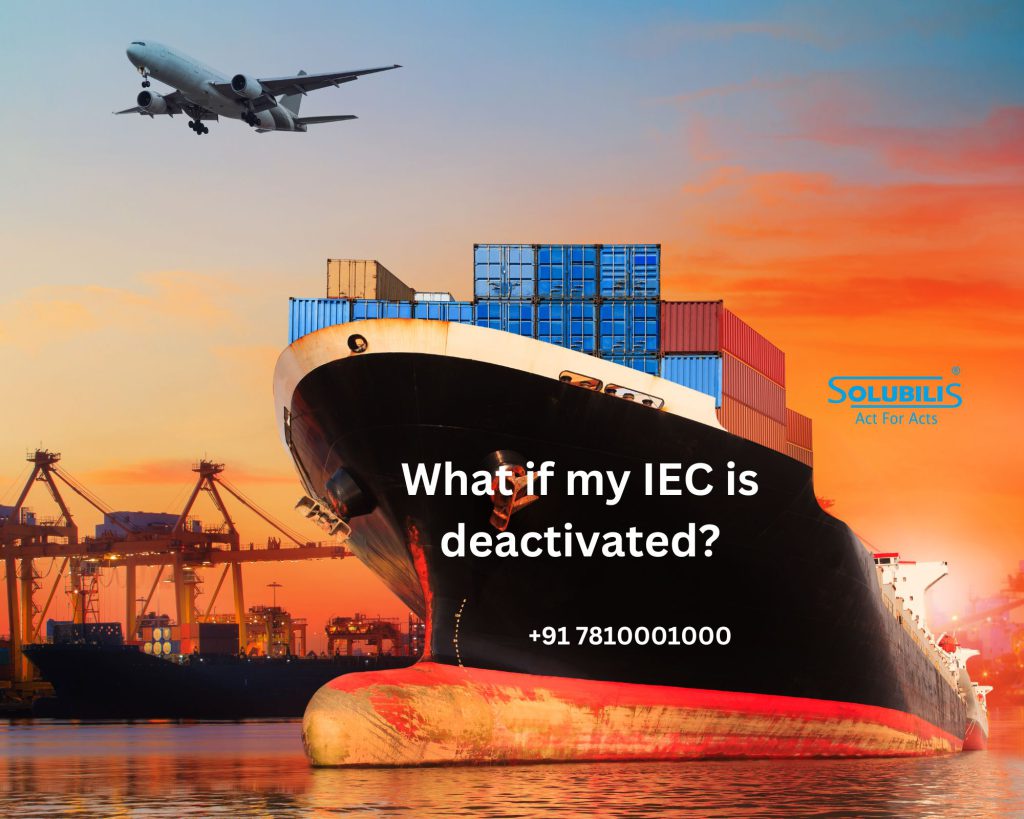In India, Import Export Code (IEC) is a unique 10-digit alphanumeric code issued by the Directorate General of Foreign Trade (DGFT), which operates under the Ministry of Commerce and Industry.
The IEC serves as a mandatory registration requirement for individuals or businesses engaged in import and export activities. It is essentially a license that enables entities to engage in cross-border trade and facilitate international business transactions.
The IEC serves several purposes and holds significance in the Indian import-export landscape:
Identification: The IEC acts as an identification number for importers and exporters in India. It helps in distinguishing businesses engaged in international trade from other entities and enables authorities to track their activities.
Statutory Requirement: The IEC is a legal requirement for conducting import and export operations in India. It is mandated under the Foreign Trade (Development and Regulation) Act, 1992. Without a valid IEC, individuals or businesses cannot engage in cross-border trade activities.
International Recognition: The IEC provides international recognition to Indian businesses involved in import and export. It helps establish credibility and trust with foreign partners, suppliers, and customers who often require a valid IEC to engage in trade transactions.
What if IEC is deactivated?
If your Import Export Code (IEC) is deactivated in India, it means that your ability to engage in import and export activities is temporarily suspended or revoked. The deactivation of IEC can occur due to various reasons, including non-compliance with regulatory requirements, violation of export-import laws, or failure to renew or update the IEC as per the prescribed timelines.
Implications of IEC Deactivation:
When your IEC is deactivated, you are no longer authorized to engage in import or export activities under that particular IEC number. The deactivation may have the following implications:
a. Inability to Import or Export: You will not be able to import goods into India or export goods from India using the deactivated IEC. This can disrupt your business operations, delay shipments, and impact your supply chain.
b. Loss of Market Opportunities: Deactivation of IEC can lead to missed business opportunities, both domestically and internationally. You may lose contracts, customers, and potential partnerships due to the inability to engage in import-export transactions.
c. Legal Consequences: Operating without a valid IEC or engaging in import-export activities with a deactivated IEC can have legal consequences. It may result in penalties, fines, or legal action by regulatory authorities.
d. Impact on Reputation: IEC deactivation can negatively impact your business’s reputation, as it suggests non-compliance with regulatory requirements. This can affect your credibility with customers, suppliers, and business partners.

Reasons for IEC Deactivation:
IEC deactivation can occur due to various reasons, including:
a. Non-compliance: Failure to comply with the regulations and guidelines of the Directorate General of Foreign Trade (DGFT), which oversees import-export activities in India, can lead to IEC deactivation. This includes non-compliance with reporting requirements, submission of incorrect or incomplete information, or violation of export-import laws.
b. Non-Renewal: If you fail to renew your IEC within the specified timeline, your IEC may be deactivated. It is essential to keep track of the renewal dates and ensure timely submission of renewal applications along with the required documentation.
c. Non-Operational Status: If your business has been non-operational or inactive for an extended period, the authorities may deactivate your IEC. This is done to maintain an updated database of active importers and exporters in the country.
d. Non-Filing of Returns: Non-filing of mandatory returns, such as the Export Declaration Form (EDF) or the Importer Exporter Code Return (IEC Return), can lead to IEC deactivation. These returns provide information about your import-export activities and are required to be submitted periodically to the DGFT.
e. Violation of Export-Import Laws: Serious violations of export-import laws, such as smuggling, fraudulent practices, or engaging in prohibited or restricted trade activities, can result in IEC deactivation and may also attract legal action.
Steps to Reactivate IEC:
If your IEC is deactivated, you can take the following steps to reactivate it:
- Identify the Reason for Deactivation:
Contact the DGFT or the concerned Regional Authority to determine the specific reason for IEC deactivation. Understanding the cause will help you address the issue effectively.
- Rectify Non-Compliance:
If the deactivation is due to non-compliance, rectify the non-compliant issues identified by the authorities. This may involve submitting required documents, updating information, or rectifying any errors in previous submissions.
- File Pending Returns:
If the deactivation is due to non-filing of returns, file all pending returns with the DGFT. Ensure that you comply with the reporting requirements going forward to avoid future deactivation.
- Pay Applicable Fees or Penalties:
In some cases, the reactivation of IEC may require payment of fees or penalties as specified by the DGFT. Fulfil the financial obligations as directed to complete the reactivation process.
- Submit Requisite Documents:
Prepare and submit the necessary documents as per the DGFT’s guidelines. This may include a reactivation application, updated business details, proof of compliance, and any additional documents requested by the authorities.
- Follow-up with DGFT:
After submitting the reactivation application and documents, follow up with the DGFT or the concerned Regional Authority to track the progress of your reactivation request. Be prepared to provide any additional information or clarification if required.
- Compliance Going Forward:
Once your IEC is reactivated, ensure strict compliance with the regulations and guidelines of the DGFT. Timely filing of returns, maintaining accurate records, and adhering to export-import laws will help avoid future deactivation and maintain a smooth import-export operation.
It is crucial to note that the specific process and requirements for IEC reactivation may vary depending on the circumstances and the discretion of the DGFT or the concerned Regional Authority. Therefore, it is advisable to consult with a legal professional or seek guidance from the DGFT for precise instructions and assistance in reactivating your IEC in India.
Conclusion
In conclusion, the deactivation of an IEC in India can have significant implications for import-export activities. Understanding the reasons for deactivation, rectifying non-compliance issues, and following the prescribed steps to reactivate the IEC are essential to resume import-export operations smoothly.
It is important to maintain compliance with regulatory requirements and stay up to date with any changes or obligations imposed by the DGFT to avoid deactivation or other legal consequences.
